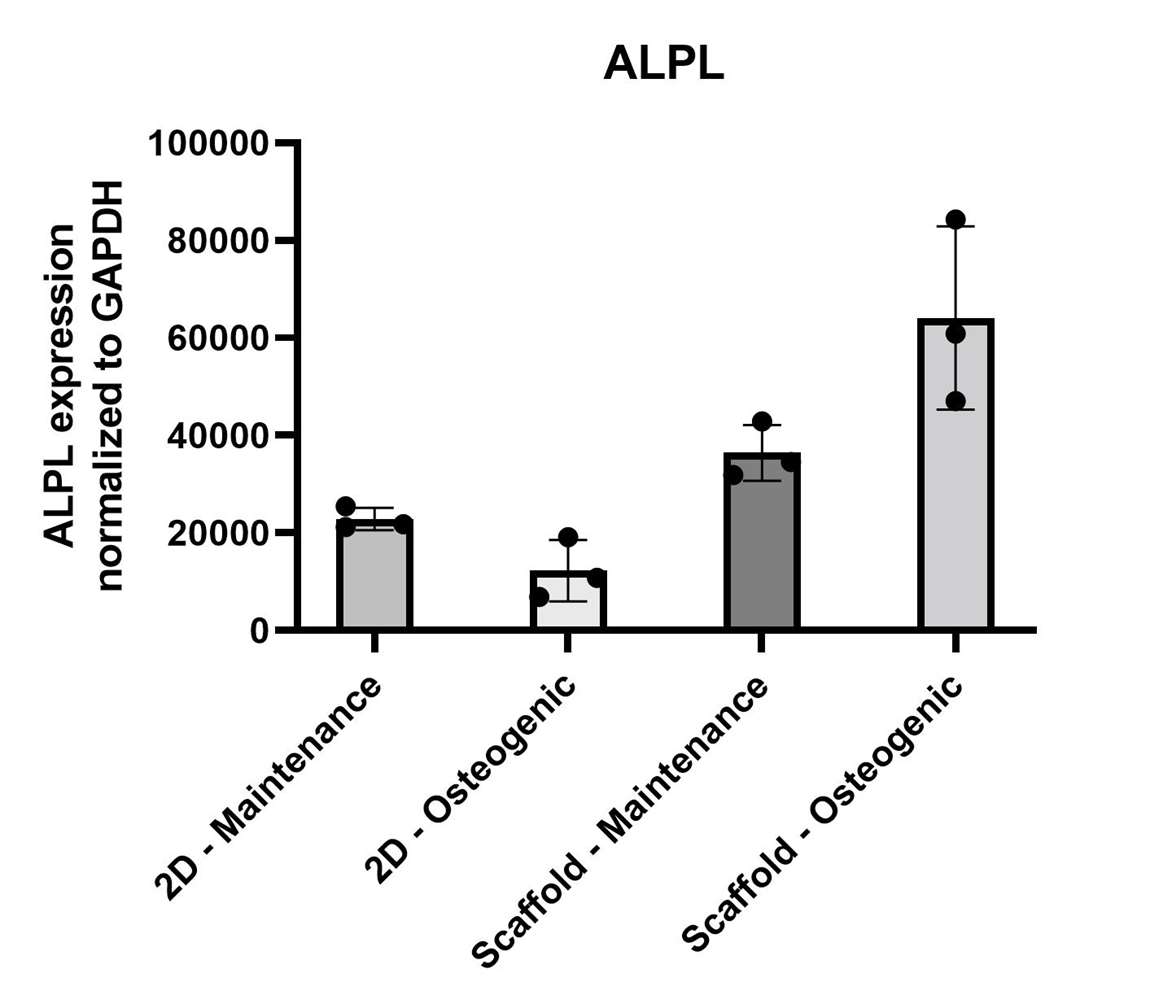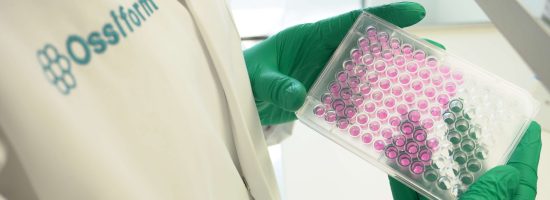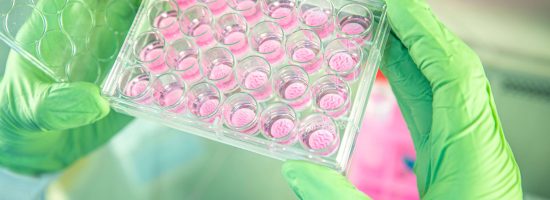Upregulated expression of the alkaline phosphatase gene

Fresh from the Scanning Electron Microscope
Alkaline phosphatase plays a vital role in osteogenesis and bone formation and is one of three identified osteogenic marker genes. At Ossiform, we are happy to show new preliminary data which indicates that osteoblasts cultured on the P3D Scaffolds have an upregulated expression of the alkaline phosphatase gene when compared to traditional cell culturing.
These data suggest that the P3D Scaffolds are beneficial for the osteogenic program in vitro on a transcriptional level, thereby supporting their natural genetic fate.
Want to discuss how you can use the 3D cell culture systems in your study? Book an online research consultation with our Scientific Team to learn more and request your sample.

What are the P3D Scaffolds?
Bioceramic 3D scaffolds that mimic the physical properties of bone – with no batch-to-batch variance.
The 3D printed structures replicate the architecture and complexity of calcified bone tissue. This lets you create more relevant and reliable tissue- and disease models that capture the complex interplay between various cells.
The 3D scaffolds can also be used to test new therapies in lifelike structures. This allows for a more realistic testing that is more likely to yield reliable results when subsequently translated.
You get a biocompatible system of natural materials and customized structures. This lets you create predictive research models of human physiology and pathology.


